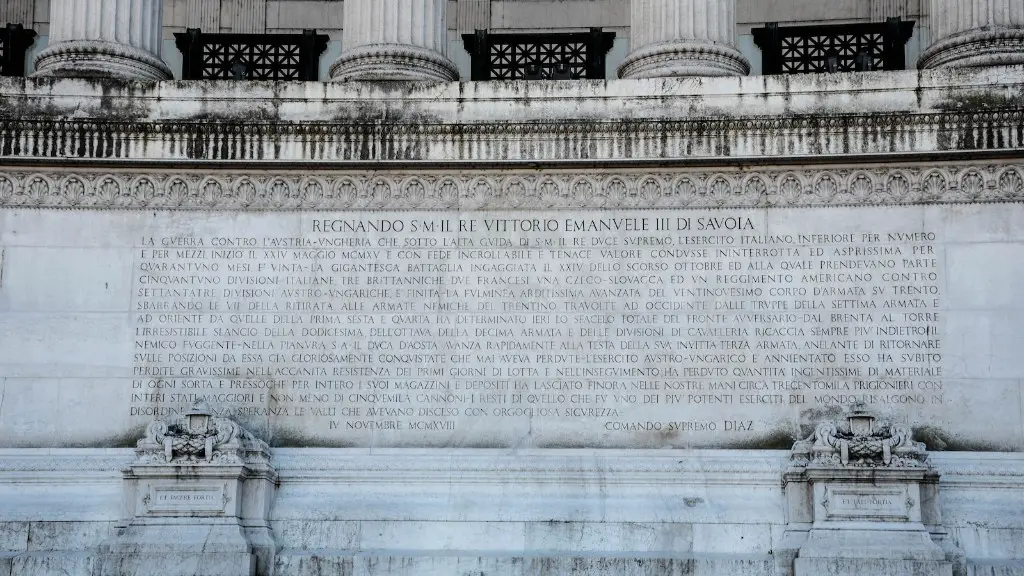The ancient Romans were known for their use of dogs for various purposes. Some of the most common uses for dogs in ancient Rome were for hunting, herding, and guarding. Hunters would use dogs to track and flush out game, while shepherds would use them to herd sheep and other livestock. Guard dogs were used to protect property and people, and were often used in the military as well.
Different breeds of dogs were used for different purposes by the ancient Romans. Large mastiff type dogs were used as guard dogs and to protect livestock from predators. Sleeker hunting dogs were used by the wealthy to accompany them on hunts. Roman military used dogs for many purposes including: to carry packs and supplies, to track and find enemy soldiers, to serve as sentries and guards, and to attack enemy soldiers.
What were dogs used for in ancient Rome?
The dog is a versatile and multi-faceted creature that has played many different roles throughout history. It has been a companion and guardian, a hunter and professional fighter, a tracker and fellow warrior, and even a sacrificial offering to the gods. It has served to keep one warm at night, alerted an owner to the presence of unseen spirits, and was regularly depicted in Roman myths and legends in practical roles. The dog is a loyal and faithful friend that has always been by our side, and will continue to be so for many years to come.
The Romans used a type of dog known as the Molossian in battle. This breed was bred by the Greeks and adopted by the Romans after they conquered them. The Molossian is the ancestor of modern dog breeds such as the Great Pyrenees, Great Dane, and Rottweiler.
How did Romans view dogs
It is likely that dogs were domesticated, both as guard dogs and as pets, in towns and cities in the Roman period. Large dogs would have been kept principally as guard dogs, but this does not necessarily mean that they were not also regarded as pets by their owners.
Dogs have been present in human societies for thousands of years and have played a variety of roles. They were used in hunting, as guard dogs, and for herding sheep but were also kept as companions. A dog’s soul was thought to be constituted of one-third wild beast, one-third human, and one-third divine and so dogs were to be treated with proper respect and consideration.
Why were dogs crucified in Rome?
The ritual of punishing dogs for their failure to warn the Romans of the stealth attack against the citadel by the Gauls during the Gallic siege of Rome in 390 BC (or 387) is mentioned in various sources. It is clear that the dogs were punished for their failure to perform their duties, and not for any other reason.
The Greeks and Romans were great fans of dogs and appreciated their loyalty. Ancient writers of all classes would celebrate the dog’s attachment to man. From the most distant antiquity, the dog has been a symbol of fidelity.
Did Roman soldiers use dogs?
War dogs were used by various cultures throughout history, including the Egyptians, Greeks, Persians, Sarmatians, Baganda, Alans, Slavs, Britons, and Romans. Among the Greeks and Romans, dogs typically served as sentries or patrols, though they were occasionally taken into battle. War dogs were often bred for their size, strength, and aggression, and were typically trained to attack and subdue enemy soldiers. In some cases, they were even outfitted with armor or other weaponry. Although their use has declined in recent years, war dogs are still employed by militaries around the world, and have proven to be a valuable asset in combat situations.
This annual sacrifice was a way of honoring the Roman gods and goddesses, as well as asking for their protection. The dogs who were used in this sacrifice were usually stolen from enemy camps, and their deaths were supposed to bring good luck to the Roman people. This practice eventually died out, but it is still remembered in some of the Roman religions that exist today.
What was the most popular pet in ancient Rome
Birds were a common pet in the time of the Roman Empire and were kept in cages by their owners. Generally, it was the upper-class Romans (or patricians) who owned birds. Ancient Roman artworks, poems, and pieces of writing confirm this fact.
The Huns were a nomadic group that originated in Central Asia. They were experts in horsemanship and archery, and were known for their ferocity in battle. In the late 4th century, the Huns began to migrate westward, and they eventually crossed into Roman territory. The Romans were woefully unprepared for the Huns’ attack, and the Huns ravaged the eastern half of the empire. The Huns were eventually pushed back by the Romans, but not before they had caused considerable damage.
What did Caesar do to the dog?
The video is both disturbing and infuriating. There’s no excuse for animal abuse, and it’s sickening to see someone treating dogs this way. Hopefully, the person responsible will be held accountable and justice will be served.
The Bible contains numerous references to dogs, both positive and negative. On the one hand, dogs are seen as loyal and loving companions. On the other hand, they are also associated with greed, violence, and disease.
In Philippians 3:2, Paul warns the Christians in Philippi to beware of those who would harm them, using the analogy of a dangerous dog. Proverbs 26:11 compares a fool who returns to his foolish ways to a dog who returns to his vomit.
Luke 16:21 tells the story of a poor man named Lazarus who was so hunger that he begged for the crumbs that fell from the rich man’s table. Even the dogs had more mercy on him than the rich man, and licked his sores.
The Bible teaches us that dogs can be both good and bad. We should be careful of those who would hurt us, but we should also show mercy to those who are needy and suffering.
When were working dogs first used
Viking culture placed a high value on working dogs, and some of the earliest references to them are well documented. These dogs were often buried alongside their Viking masters, testifying to their importance as companions and workers. Today, we still value working dogs for their many skills and their loyal companionship.
The Persian is quick in both respects. Some rear mastiff dogs a breed of unmanageable ferocity.
When did humans first work with dogs?
There is archaeological evidence dogs were the first animals domesticated by humans more than 30,000 years ago. This means that dogs have been living with humans for a very long time and have evolved to become one of our best friends. Dogs are known for their loyalty, intelligence, and affection, and these qualities have likely arisen due to their long history of living side-by-side with humans.
The breaking of the legs was probably done more as a way to ensure that the victim would not be able to move or defend themselves rather than to speed up their death. It was likely unnecessary as the victim would not have had the strength to last more than a few minutes even if they were unharmed.
A signaculum was a lead “dog tag” in a leather pouch carried by Roman soldiers around their neck. It seems to have had personal details (acting to identify a body the same way a modern dog tag does) with a seal or stamp to authenticate it.
It is always a treat to read about the advice given by Marcus Terentius Varro on farming and other related topics. In his work “Farm Topics”, he not only gives an insight on how to provide dogs with meat and bones, but also how to soak barley in milk. This is definitely something that all farmers should consider doing in order to ensure that their dogs are well-nourished and healthy.
Warp Up
Dogs have been used by humans for many purposes since ancient times. In Rome, dogs were used for a variety of purposes such as hunting, guarding, and even as pets. Roman dogs were typically smaller than their modern counterparts, and they were often trained to perform specific tasks. For example, some dogs were trained to guard property, while others were used to hunt game.
Dogs have been used for work since ancient times. In ancient Rome, dogs were used for hunting, herding, and guarding. They were also used as watchdogs and for carrying messages. Today, dogs are still used for work, but they are also kept as pets.





